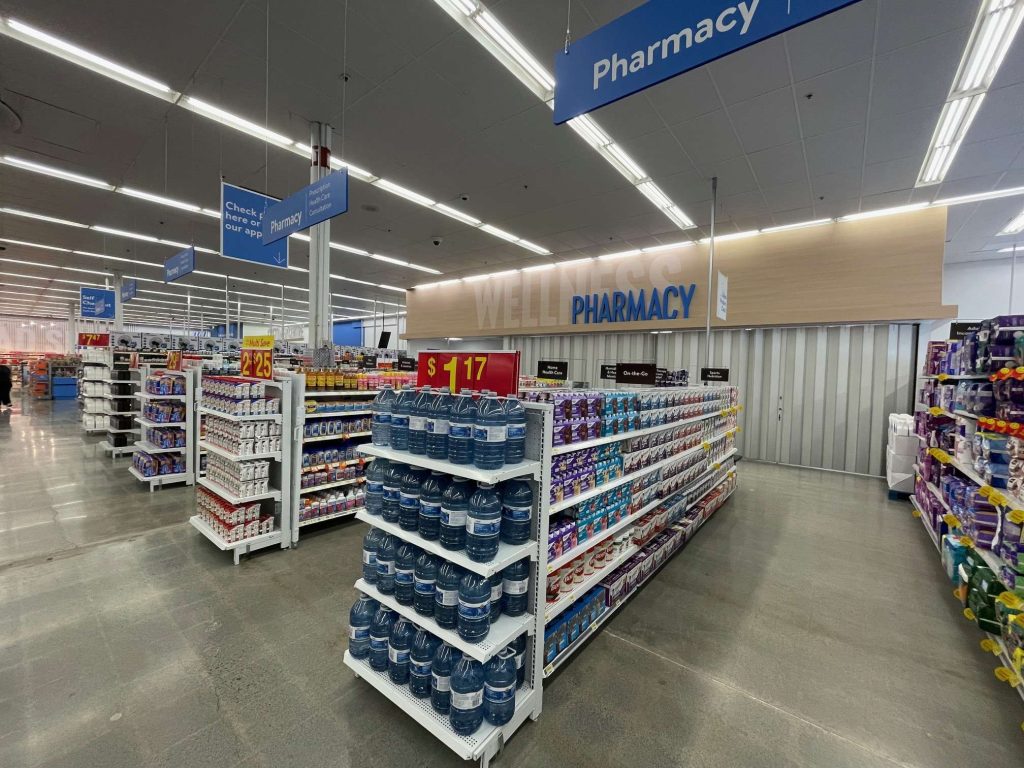Retail environments are always evolving — new seasons, new promotions, product launches, or even full brand overhauls. That’s where a retail store reset comes in.
A store reset is more than just moving shelves. It’s a carefully planned operation that ensures your space aligns with brand standards, improves customer flow, and drives sales. If you’ve ever wondered what really happens during a reset, here’s a behind-the-scenes look at the step-by-step process of a merchandising reset.
Step 1: Pre-Planning & Scope Review
Before a retail store reset can begin and anything gets moved, there needs to be a plan. The pre-planning and scope review phase involves:
- Reviewing planograms or fixture layouts
- Understanding the goals (e.g., seasonal update, new vendor integration, category refresh)
- Coordinating timelines to minimize disruption to store operations
- Defining labour, tools, and logistics needs
This is also when we identify any repairs, fixture replacements, or special considerations like electrical work.
Step 2: Communication with Store Leadership
A successful store reset relies on collaboration. The Reset Team communicates with store leadership and works with store managers to:
- Review timelines and hours of access
- Understand store-specific constraints (e.g., high-traffic hours, security needs)
- Establish points of contact for questions or approvals
Clear communication here avoids surprises later.
Step 3: De-Merchandising
With the plan approved, the next step is to remove merchandise from affected areas:
- Products are carefully removed, stored, or relocated
- Fixtures are cleared to prepare for movement or removal
- All work is done with minimal disruption to customers (often after hours)
Step 4: Fixture Removal, Installation & Repair
Fixture removal, installation and repair is at the very core of a merchandising reset and involves:
- Existing fixtures may be disassembled or relocated
- New fixtures are assembled and installed per layout specs
- Flooring, walls, and electrical may be repaired or updated as needed
This stage requires skilled installers who can work quickly, safely, and cleanly.
Step 5: Merchandising & Visual Setup
Once the physical layout is complete, it’s time to bring the store to life:
- Merchandise is reloaded based on the new planogram
- Signage, lighting, and promotional materials are installed
- Shelves are fronted and faced to ensure a clean, shoppable presentation
Step 6: Final Walkthrough & Sign-Off
A supervisor or project lead performs a walkthrough with store leadership to ensure:
- All work meets specifications
- Any punch-list items are noted and resolved
- The store is ready for customers
Daily reporting and photos may also be submitted to corporate teams, especially during national retail rollouts.
Step 7: Disposal & Clean-Up
After the retail store reset has been completed, we ensure the site is left spotless which includes:
- Old fixtures or debris are removed and properly disposed of
- Work areas are cleaned
- Temporary signage or safety barriers are taken down
The goal? To make it look like the new setup was always there.
Retail resets may happen overnight, but they’re the result of weeks of planning and precise execution. When done right, they breathe new life into your space and support your sales goals.
At The Reset Team, we’ve completed thousands of retail store resets across Canada for retailers like Home Depot, Walmart, Staples, and more. Whether you’re launching a new initiative or refreshing your entire chain, we know how to get it done — on time, on brand, and with minimal disruption. Trust Canada’s best merchandising service.
Need help with your next store reset? Contact us to learn how we can support your rollout.

